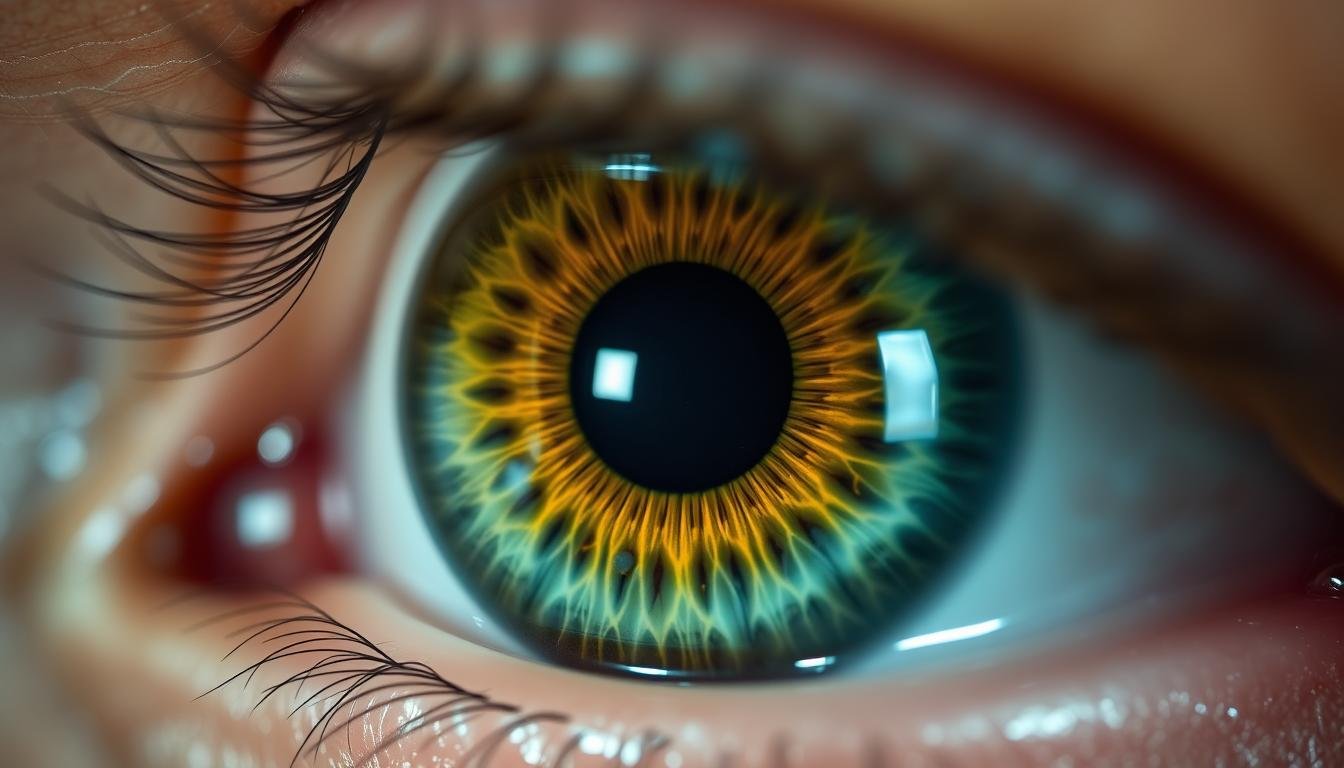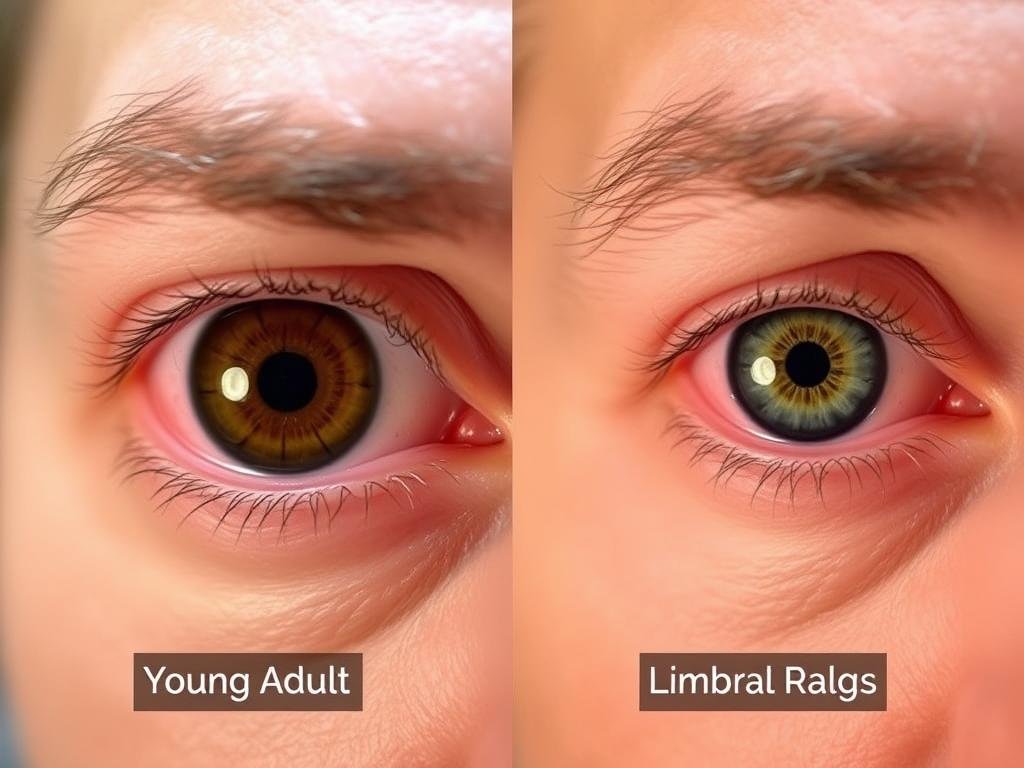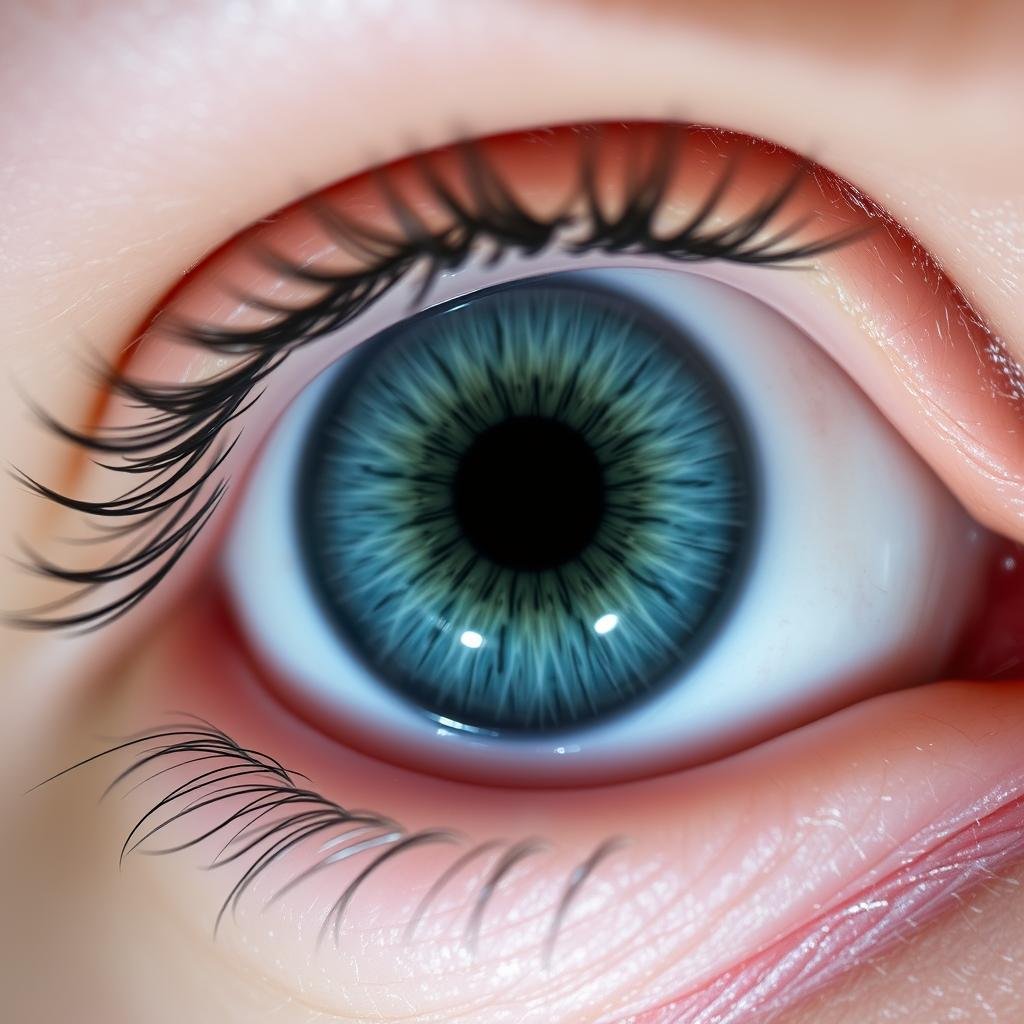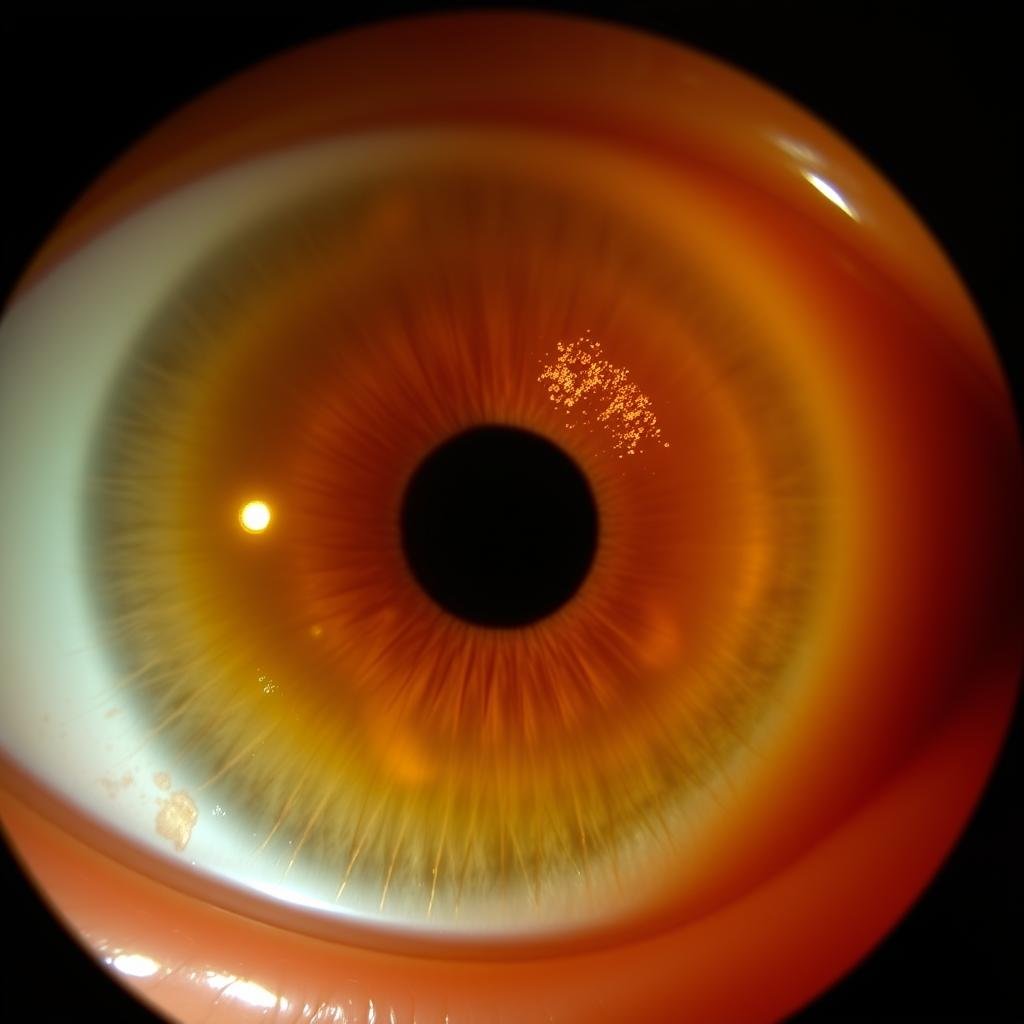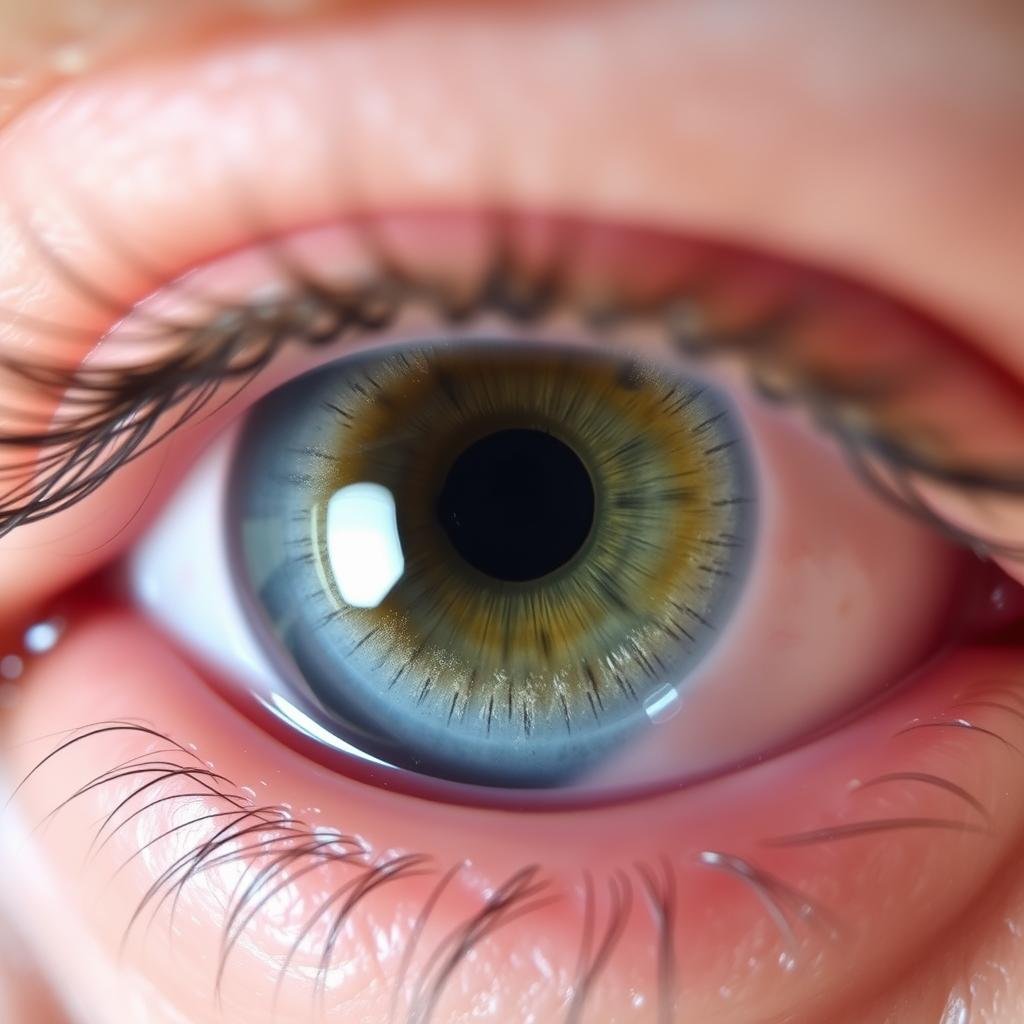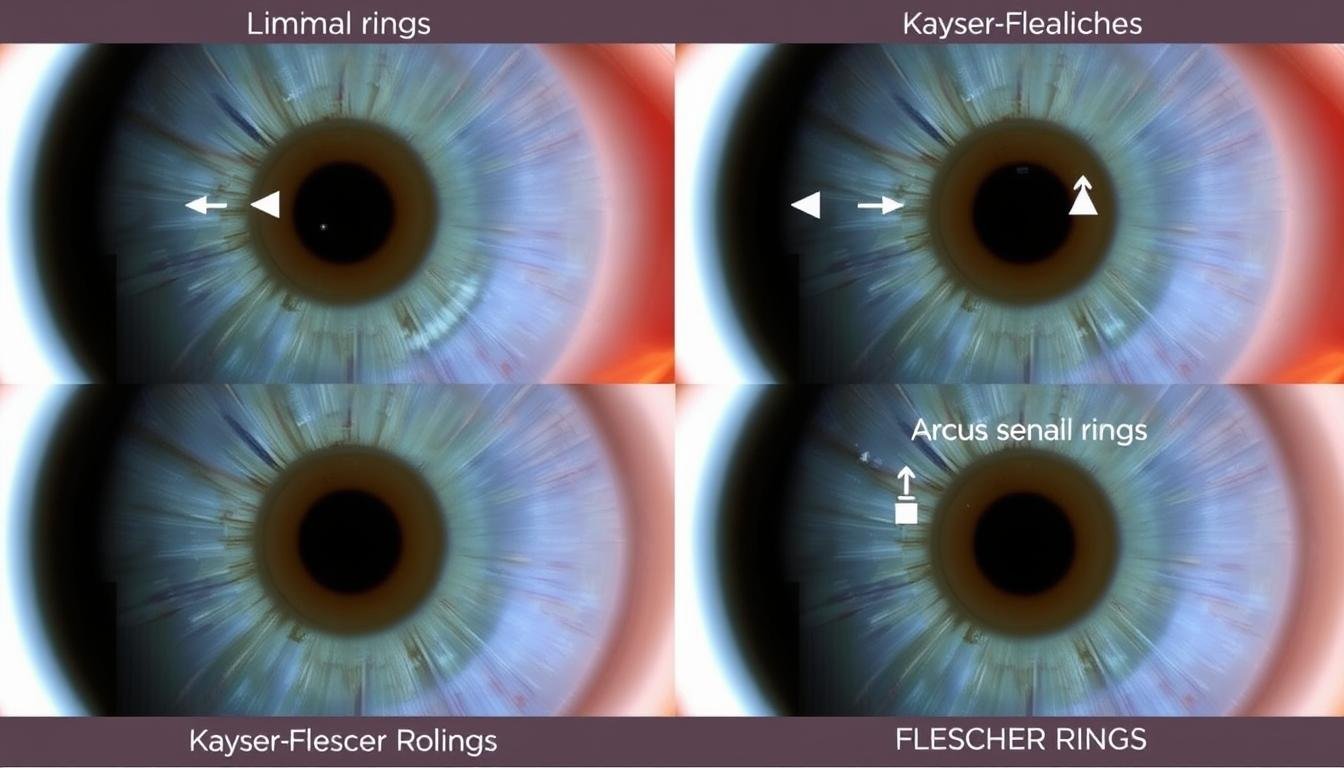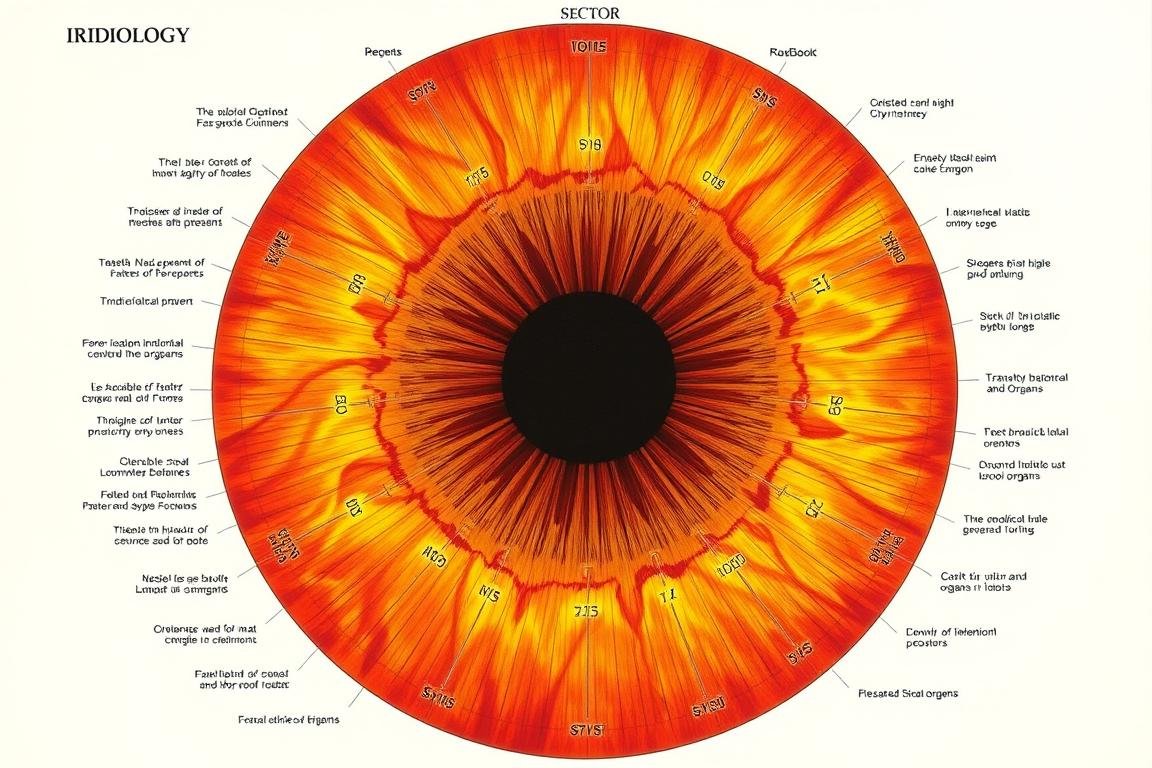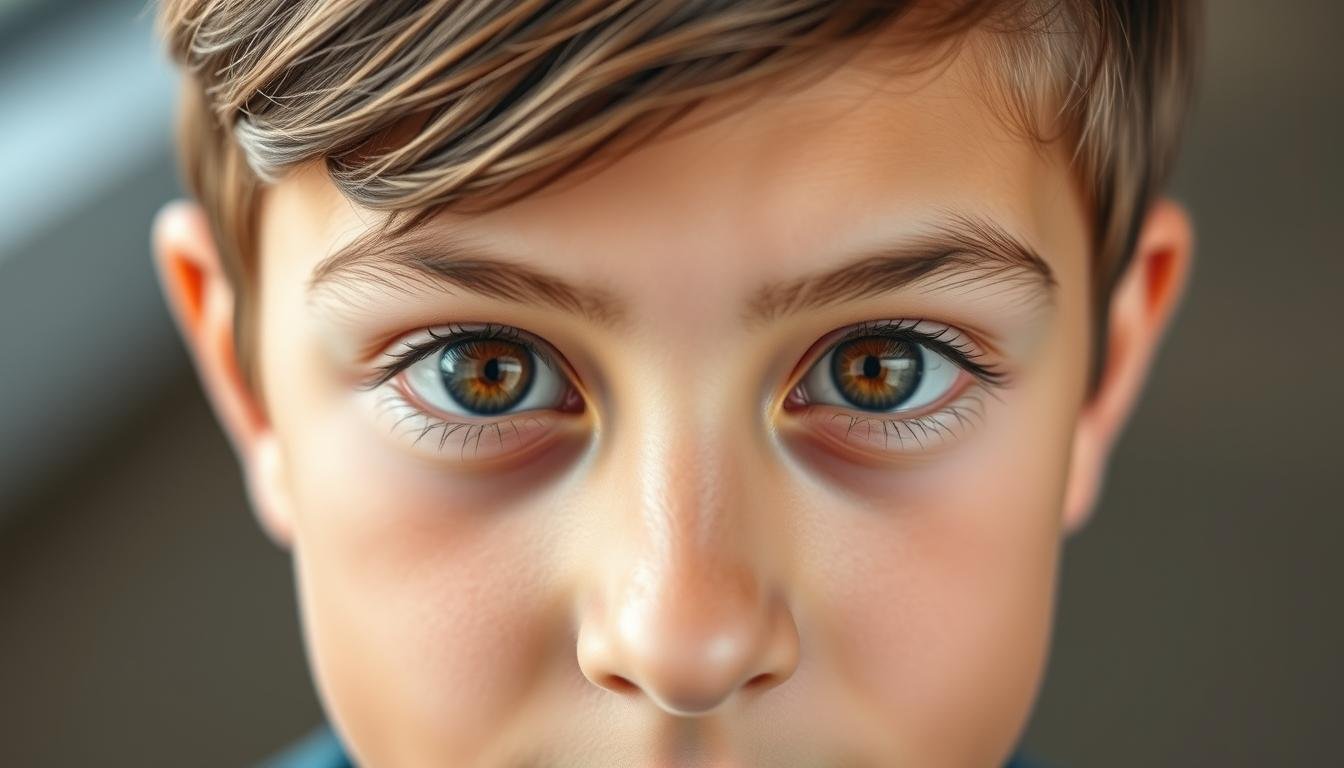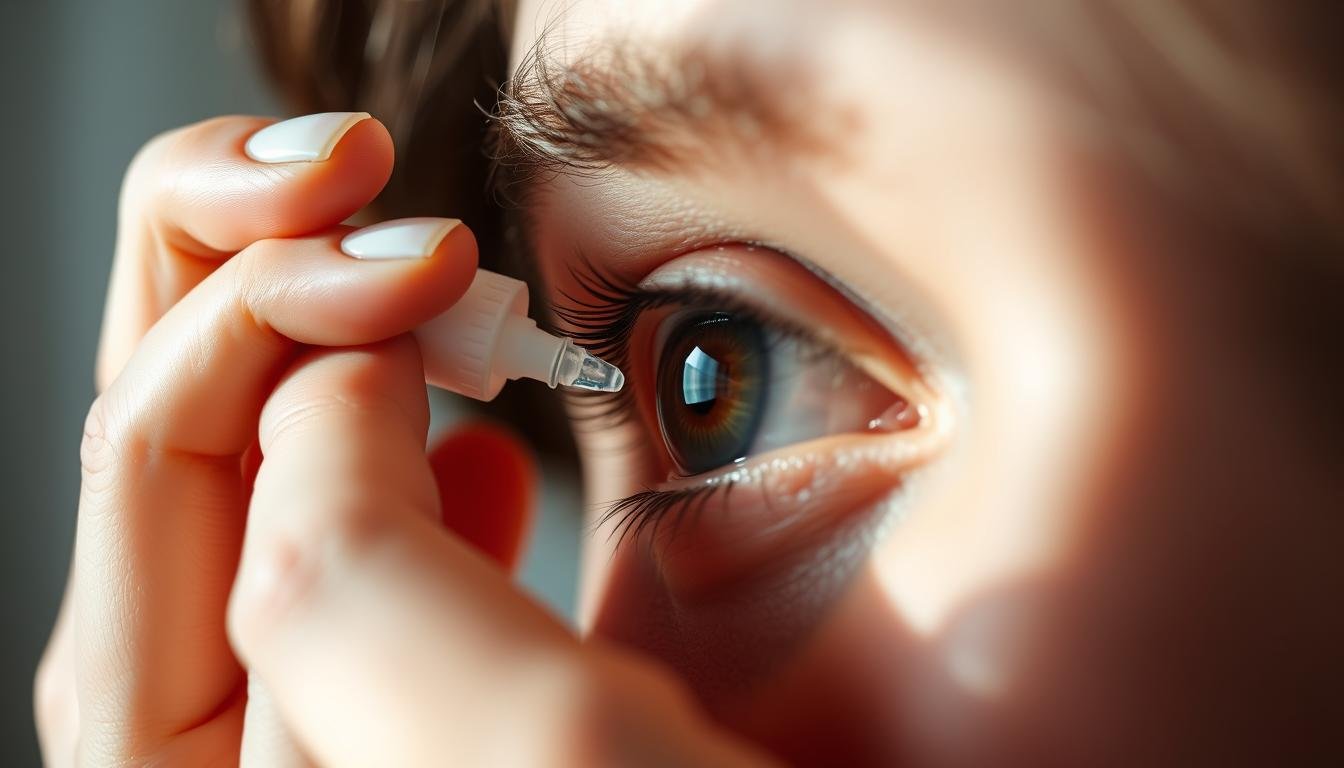Have you ever noticed the distinct circles or patterns that frame the colored part of someone’s eyes? These fascinating features, known as Rings In Eyes Iris, can vary dramatically from person to person. Some Rings In Eyes Iris appear as dark borders highlighting the eye’s color, while others might indicate underlying health conditions.From the attractive limbal rings that enhance eye appearance to medically significant Kayser-Fleischer rings, these ocular features have captured attention in both medical science and cultural interpretations. This comprehensive guide explores the various types of Rings In Eyes Iris, what causes them, and what they might reveal about your health and biology.What Are Rings In Eyes Iris?

Detailed view of Rings In Eyes Iris surrounding the colored part of the eye
Rings In Eyes Iris are circular patterns or pigmented areas that appear in or around the iris, which is the colored part of your eye. These rings can form for various reasons, including genetics, aging, and certain medical conditions. The iris itself contains intricate patterns unique to each individual, but the rings we’re discussing are specific circular formations that have distinct appearances and meanings.
The most common types of Rings In Eyes Iris include limbal rings (dark circles around the iris), Kayser-Fleischer rings (copper deposits at the edge of the cornea), and various other formations identified in both conventional medicine and alternative practices like iridology. Each type has different characteristics and potential significance for your health and appearance.
Causes of Rings In Eyes Iris
جينياتي عنصر
Many Rings In Eyes Iris, particularly limbal rings, are determined by genetics. The presence, thickness, and prominence of these rings can be inherited traits that vary across families and ethnic backgrounds. Some people naturally have more pronounced rings than others, regardless of age or health status.
Genetic factors influence the distribution of melanin (the pigment that gives eyes their color) in the iris, which can create the appearance of rings or other patterns. These inherited characteristics are typically present from birth and may change gradually over time.
Age-Related Changes
As we age, certain Rings In Eyes Iris undergo noticeable changes. Limbal rings, for example, tend to be most prominent in children and young adults, gradually becoming thinner or less visible with age. This natural fading process typically begins in a person’s 20s or 30s.
The thinning of limbal rings occurs because the cornea becomes less transparent with age, affecting how light reflects through the eye and how the rings appear. This is a normal part of aging and doesn’t necessarily indicate any health concerns.

Comparison showing how Rings In Eyes Iris typically fade with age
Medical Conditions
Several health conditions can cause distinctive rings to form in or around the iris:
- Wilson’s Disease – This genetic disorder causes copper to accumulate in the body, forming Kayser-Fleischer rings at the edge of the cornea. These rings appear as greenish-brown or golden deposits.
- High Cholesterol – Elevated cholesterol levels can lead to arcus senilis, a white-gray ring around the cornea caused by lipid deposits. While common in older adults, its appearance in younger people may indicate high cholesterol.
- Liver Conditions – Primary biliary cholangitis and other liver disorders can sometimes cause ring-like deposits to form in the eyes as the body struggles to process certain substances.
- Corneal Conditions – Keratoconus and other corneal disorders can create Fleischer rings, which are iron deposits that form a ring in the cornea.
If you notice sudden changes in the appearance of rings around your iris, especially when accompanied by other symptoms like vision changes or eye discomfort, it’s important to consult with an eye care professional promptly.
Types of Rings In Eyes Iris
لالٽ رنگون
Limbal rings are dark circles that frame the iris where it meets the sclera (the white part of the eye). These rings are most visible in people with lighter-colored eyes but can appear in all eye colors. Research suggests that prominent limbal rings are often perceived as attractive and may subconsciously signal youth and health.
Most people are born with visible limbal rings, but they typically become less prominent with age. The rate at which they fade varies from person to person, with some individuals maintaining noticeable limbal rings well into adulthood.
ڪيوزر- فلائير رنج
Kayser-Fleischer rings form when copper accumulates in the Descemet’s membrane of the cornea. They appear as greenish-brown or golden rings at the outer edge of the iris. These rings are a key diagnostic sign of Wilson’s disease, a genetic disorder that affects copper metabolism.
Unlike limbal rings, Kayser-Fleischer rings are not normal features and require medical attention. They’re often difficult to see without a special examination called a slit-lamp exam, particularly in people with darker eye colors.
آرڪ بزرگ
Arcus senilis appears as a white-gray ring around the cornea due to lipid deposits. It’s common in older adults (hence “senilis”) and usually doesn’t affect vision. However, when it appears in younger people (then called arcus juvenilis), it may indicate high cholesterol levels.
This type of ring typically forms first at the top and bottom of the cornea before eventually creating a complete circle. Unlike some other Rings In Eyes Iris, arcus senilis doesn’t disappear with treatment, even if the underlying cholesterol issues are addressed.
Other Notable Iris Formations
نروس رِنگس
In iridology (the study of iris patterns for health assessment), nerve rings appear as circular contraction rings in the iris. Practitioners believe these may indicate nervous tension or anxiety. While not recognized in conventional medicine, these patterns are studied in alternative health practices.
Fleischer Rings
Different from Kayser-Fleischer rings, these are caused by iron deposits in the cornea and are associated with keratoconus, a condition where the cornea bulges outward in a cone shape. They appear as a partial or complete ring of rust-colored pigment at the base of the cone.

Comparison of different types of Rings In Eyes Iris and their distinctive appearances
Medical Significance of Rings In Eyes Iris
While some Rings In Eyes Iris are merely cosmetic features, others can provide important clues about underlying health conditions. Understanding the medical significance of different Rings In Eyes Iris can help you determine when to seek professional evaluation.

Eye care professional examining Rings In Eyes Iris using specialized equipment
Diagnostic Indicators
Wilson’s Disease
Kayser-Fleischer rings are present in approximately 95% of patients with neurological symptoms of Wilson’s disease and about 50% of those with only liver symptoms. These rings are so strongly associated with the condition that their presence, along with low ceruloplasmin levels in the blood, is often enough to confirm a diagnosis.
Importantly, these rings typically disappear with effective treatment of Wilson’s disease, making them a useful marker for monitoring treatment progress.
Learn more about Wilson’s disease
Cholesterol and Cardiovascular Health
Arcus senilis in people under 40 years of age (arcus juvenilis) may indicate high cholesterol levels and potentially increased risk of cardiovascular disease. While common and generally benign in older adults, its early appearance warrants a lipid profile assessment.
Unlike Kayser-Fleischer rings, arcus senilis typically doesn’t disappear with treatment of the underlying condition, though managing cholesterol can prevent further development.
Check cholesterol risk factors
When to Seek Medical Attention
Consult an eye care professional if you notice:
- Sudden appearance of new rings around your iris
- Yellowish or greenish-brown rings (possible Kayser-Fleischer rings)
- White or gray rings appearing before age 40 (possible arcus juvenilis)
- Any iris changes accompanied by vision problems, eye pain, or other symptoms
Regular comprehensive eye examinations can detect many of these changes before they cause symptoms or before you notice them yourself. Early detection of conditions like Wilson’s disease can significantly improve treatment outcomes and prevent serious complications.
Cultural and Alternative Interpretations of Rings In Eyes Iris

Iridology Perspectives
Iridology is the study of iris patterns, colors, and changes as indicators of health and personality traits. While not widely accepted in conventional medicine, this practice has followers worldwide who believe the iris can reveal information about a person’s physical and emotional well-being.
Nerve Rings and Stress
In iridology, circular contraction rings in the iris (called nerve rings) are believed to indicate nervous tension, anxiety, or stress levels. The number and depth of these rings supposedly correlate with the intensity of stress the person experiences.
Iridologists may recommend relaxation techniques, specific herbs like Valerian or Chamomile, and B vitamins to address these patterns, though scientific evidence supporting these interpretations is limited.
Lymphatic Rosary
جي “lymphatic rosary” يا مان “Ring of Rosary” is described in iridology as a ring formation indicating lymphatic system congestion. Practitioners suggest this pattern reflects how efficiently the body’s waste removal system is functioning.
Recommendations often include increased physical activity (especially walking), lymphatic drainage massage, and herbs believed to support lymphatic function, though these approaches lack substantial scientific validation.
Cultural Significance
Beyond health interpretations, Rings In Eyes Iris—particularly limbal rings—hold cultural significance in many societies:

Prominent limbal rings are often considered aesthetically appealing
- Beauty Standards – Research suggests people with visible limbal rings are often perceived as more attractive. This has led to cosmetic contact lenses designed specifically to enhance or create the appearance of limbal rings.
- Youth Indicators – Since limbal rings naturally fade with age, their presence is associated with youth and vitality in many cultures. This connection may explain why they’re subconsciously perceived as attractive.
- شخصيت جا خاصيتون – In some cultural traditions, different iris patterns and rings are believed to correspond to personality traits or character attributes, though these associations vary widely across cultures.
While many cultural and alternative interpretations of Rings In Eyes Iris lack scientific validation, they reflect humanity’s enduring fascination with the eyes as “روح ڏانهن ونڊوز” and our desire to find meaning in natural biological variations.
Eye Care Tips for People with Noticeable Rings In Eyes Iris

Regular eye care is important regardless of iris ring appearance
Whether your Rings In Eyes Iris are simply an attractive feature or potentially indicate a health condition, proper eye care is essential. Here are some recommendations for maintaining eye health:
Regular Examinations
Schedule comprehensive eye examinations at least every two years, or more frequently if recommended by your eye care professional. These exams can detect changes in Rings In Eyes Iris that might indicate developing health conditions.
During these visits, be sure to mention any changes you’ve noticed in your iris appearance, even if they seem minor. Take photos of your eyes periodically if you want to track changes over time.
حفاظتي طريقا
Wear sunglasses that block 100% of UV rays when outdoors to protect your eyes from sun damage, which can accelerate age-related changes in the eye, including the fading of limbal rings.
If you work in an environment with potential eye hazards, always use appropriate protective eyewear. Digital screen users should practice the 20-20-20 rule: every 20 minutes, look at something 20 feet away for 20 seconds.
طرز زندگي جا عنصر
Maintain a diet rich in eye-healthy nutrients, including omega-3 fatty acids, lutein, zeaxanthin, and vitamins A, C, and E. Foods like leafy greens, colorful fruits, and fish support overall eye health.
Stay well-hydrated, get adequate sleep, and manage stress levels, as these factors can affect the appearance of your eyes and potentially influence certain types of Rings In Eyes Iris, particularly those related to stress or anxiety.
Concerned About Changes in Your Rings In Eyes Iris?
If you’ve noticed new or changing Rings In Eyes Iris, or if you’re curious about what your iris patterns might indicate about your health, schedule a comprehensive eye examination with a qualified professional.
Schedule an Eye Examination Today
Frequently Asked Questions About Rings In Eyes Iris
Are Rings In Eyes Iris dangerous?
Most Rings In Eyes Iris, such as limbal rings, are completely harmless and simply a natural variation in eye appearance. However, certain types like Kayser-Fleischer rings can indicate serious underlying conditions such as Wilson’s disease that require medical attention.
The potential danger depends entirely on the type of ring and its cause. If you’re concerned about rings in your iris, especially if they’ve appeared suddenly or are accompanied by other symptoms, consult with an eye care professional for proper evaluation.
Can Rings In Eyes Iris disappear?
Yes, some Rings In Eyes Iris can disappear under certain circumstances:
- Limbal rings naturally fade with age for most people, becoming less visible over time.
- Kayser-Fleischer rings typically disappear with effective treatment of Wilson’s disease.
- Stress-related rings (according to iridology) may change with stress levels and lifestyle modifications.
However, some rings like arcus senilis (age-related cholesterol rings) generally don’t disappear once they’ve formed, even with treatment of underlying conditions.
Do Rings In Eyes Iris affect vision?
Most Rings In Eyes Iris do not directly affect vision. Limbal rings, arcus senilis, and even Kayser-Fleischer rings typically don’t cause vision problems by themselves.
However, the underlying conditions that cause certain rings might eventually impact vision if left untreated. For example, untreated Wilson’s disease can lead to neurological complications that affect vision. Similarly, conditions associated with Fleischer rings, like keratoconus, can significantly impact vision quality.
If you experience vision changes along with the appearance of new Rings In Eyes Iris, seek prompt medical attention.
Can I enhance my limbal rings?
While you can’t naturally thicken limbal rings that have faded with age, there are cosmetic options available:
- Limbal ring-enhancing contact lenses are specifically designed to create or enhance the appearance of limbal rings.
- Proper hydration and rest may temporarily improve the appearance of your eyes overall, including limbal rings.
- Makeup techniques using eyeliner and eyeshadow can create the illusion of more defined limbal rings.
Remember that cosmetic enhancements are temporary and won’t change the actual structure of your eye.
Understanding Your Unique Iris Patterns
Rings In Eyes Iris represent just one fascinating aspect of our eye anatomy. From the attractive limbal rings that frame our iris to the medically significant Kayser-Fleischer rings that can indicate serious conditions, these circular patterns offer both aesthetic interest and potential health insights.
Whether you’re admiring your own limbal rings or concerned about changes in your iris appearance, remember that regular eye examinations are the best way to monitor eye health and catch any potential issues early. Your eyes are not only windows to the world but may also provide valuable clues about your overall health.

The beautiful diversity of human iris patterns and rings
Take Care of Your Precious Vision
Your eyes deserve the best care possible. Schedule a comprehensive eye examination to ensure your vision health and learn more about your unique iris patterns.
ا your توهان جي اکين جو امتحان ڪتاب ڏيو

